
|
|
|
|
|
|
Classic Bikes
Custom Bikes
Individual
Racing Bikes AJP
AJS
Aprilia
Ariel
Avinton / Wakan
Bajaj
Benelli
Beta
Bimota
BMW
Brough Superior
BRP Cam-Am
BSA
Buell / EBR
Bultaco
Cagiva
Campagna
CCM
CF Moto
Combat Motors
Derbi
Deus
Ducati
Excelsior
GASGAS
Ghezzi Brian
Gilera
GIMA
Harley Davidson
Hero
Highland
Honda
Horex
Husaberg
Husqvarna
Hyosung
Indian
Jawa
Kawasaki
KTM
KYMCO
Laverda
Lazareth
Magni
Maico
Mash
Matchless
Mondial
Moto Guzzi
Moto Morini
MV Agusta
MZ / MuZ
NCR
Norton
NSU
Paton
Peugeot
Piaggio
Revival Cycles
Roland Sands
Royal Enfield
Sachs
Sherco
Sunbeam
Suzuki
SWM
SYM
Triumph
TVS
Ural
Velocette
Vespa
Victory
Vincent
VOR
Voxan
Vyrus
Walt Siegl
Walz
Wrenchmonkees
Wunderlich
XTR / Radical
Yamaha
Zero
Video
Technical
Complete Manufacturer List
|
Ducati 125 Four Cylinder Grand Prix Racer |
| . |
One of motorcycle racing's many 'might-have-beens', the unique machine offered here is Ducati's fabled 125cc four-cylinder Grand Prix racer, which took so long to develop that it had been rendered obsolete by the time the project was completed. Its senior management having decided that racing success was the best way to promote the fledgling manufacturer, Ducati recruited engineer Fabio Taglioni, formerly with Ceccato and Mondial, to oversee its racing and development programmes. Commencing work in May 1954, Taglioni designed the first of Ducati's now legendary sporting singles: the 100 Gran Sport, nicknamed 'Marianna', which made its racetrack debut in 1955. The Gran Sport's overhead cam was driven by a vertical shaft and bevel gears, and this method was carried over to Ducati's 125cc twin-cam (bialbero) and triple-cam (trialbero) racers, the latter featuring Taglioni's famous 'desmodromic' method of valve actuation that dispensed with springs.
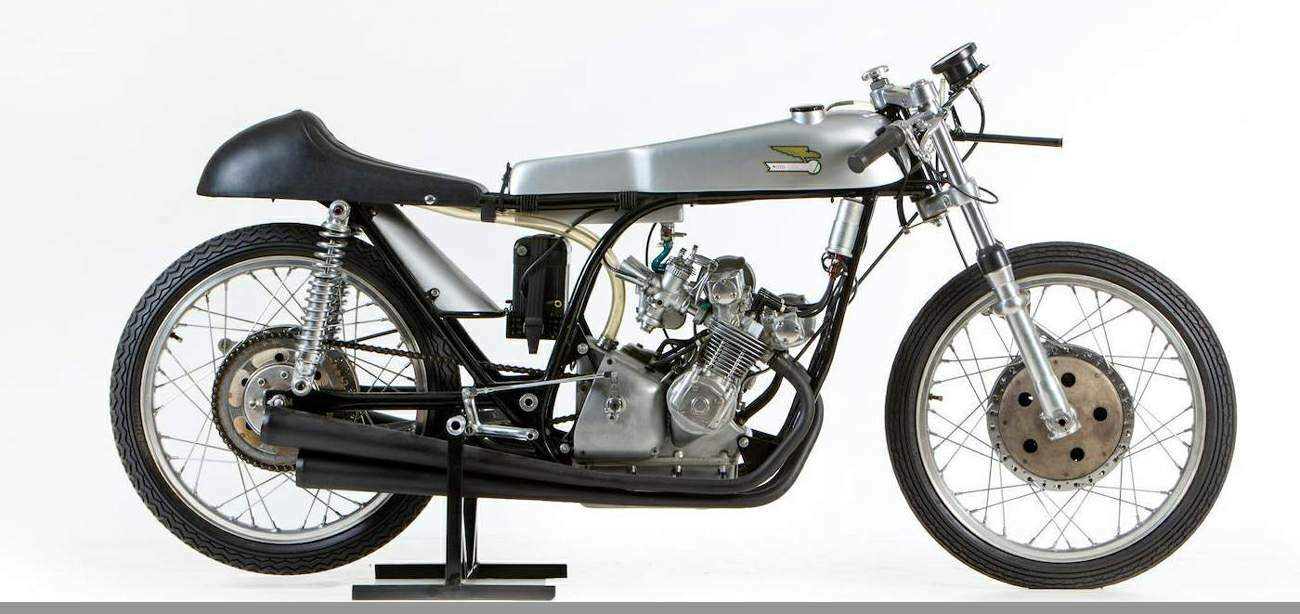
Having relied hitherto on single-cylinder designs for the 125 class, Ducati introduced a 125 twin at Monza in 1958, the final round of that year's World Championship. Although the Ducati 125s proved capable of winning Grands Prix, they lacked the consistency to challenge the dominant MVs for World Championship honours. And when the Japanese manufacturers arrived en masse in the early 1960s, bringing multi-cylinder technology to the lightweight classes, the writing seemed well and truly on the wall for the European opposition. Hence Taglioni's decision to build a 125 four.
Faced with mounting financial difficulties, Ducati withdrew its works team from Grand Prix racing at the end of 1959, which may explain the project's apparent lack of urgency. Indeed, by the time the 125 four had been completed at the end of 1965, Honda had been running a similar machine for two years and in '66 debuted a five-cylinder 125, moving the game out of Ducati's reach. Nevertheless, this machine is notable in several ways, being Ducati's first four-cylinder motorcycle and its first to use four valves per cylinder, albeit closed by springs rather than desmodromically. Like the two Honda 125s, the Ducati was equipped with an eight-speed gearbox.
Ducati’s first-ever four-cylinder machine, the GP bike consisted of a steel cradle frame wrapped around an air-cooled, DOHC, inline-four engine with four (spring-actuated, non-Desmo) valves per cylinder and an eight-speed transmission. Other equipment included Dell’Orto carbs, Ceriani suspension, and Oldani brakes front and aft.
Former racer Franco Farne was entrusted with track-testing the four, but although this proved successful the machine was never raced. Instead it was reduced to touring motorcycle shows around Europe, including London's Earls Court in 1966 and '67.
Source bonhams
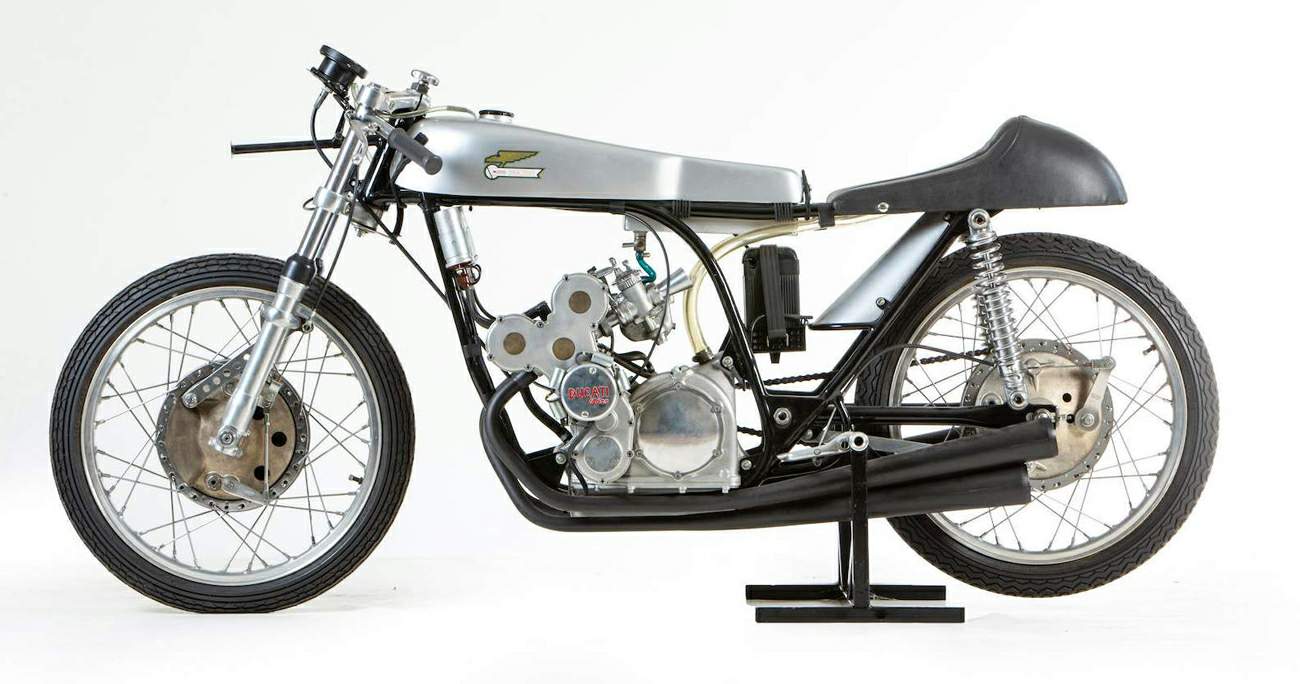
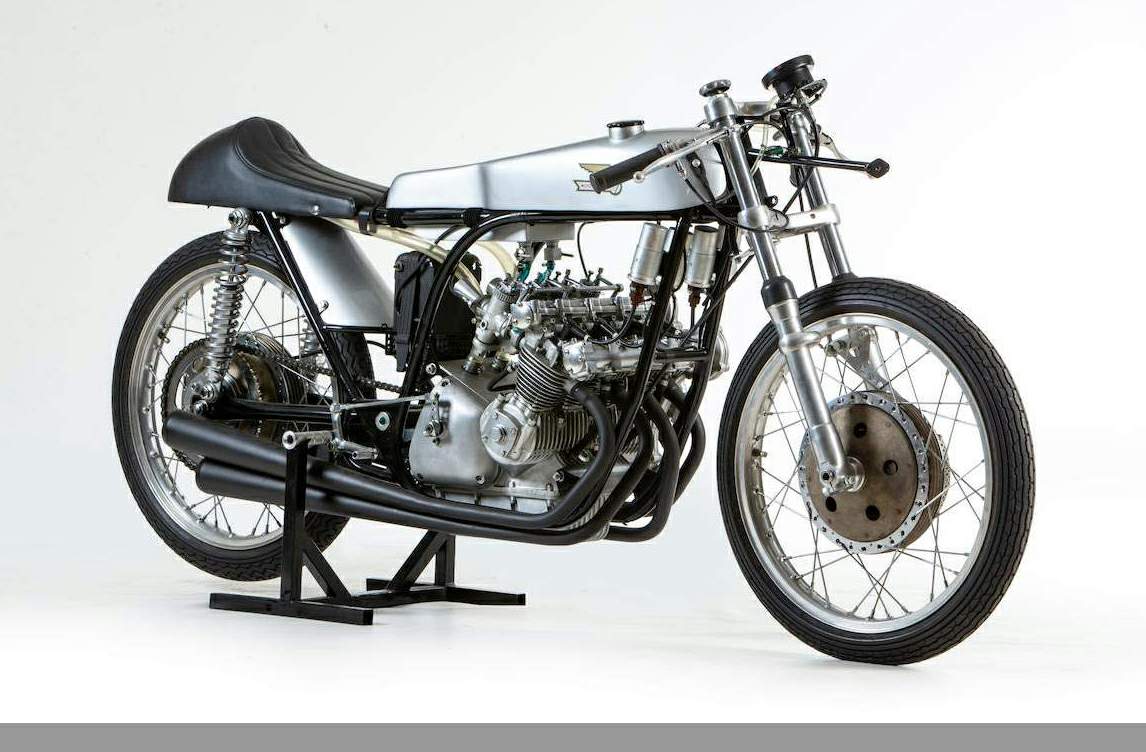
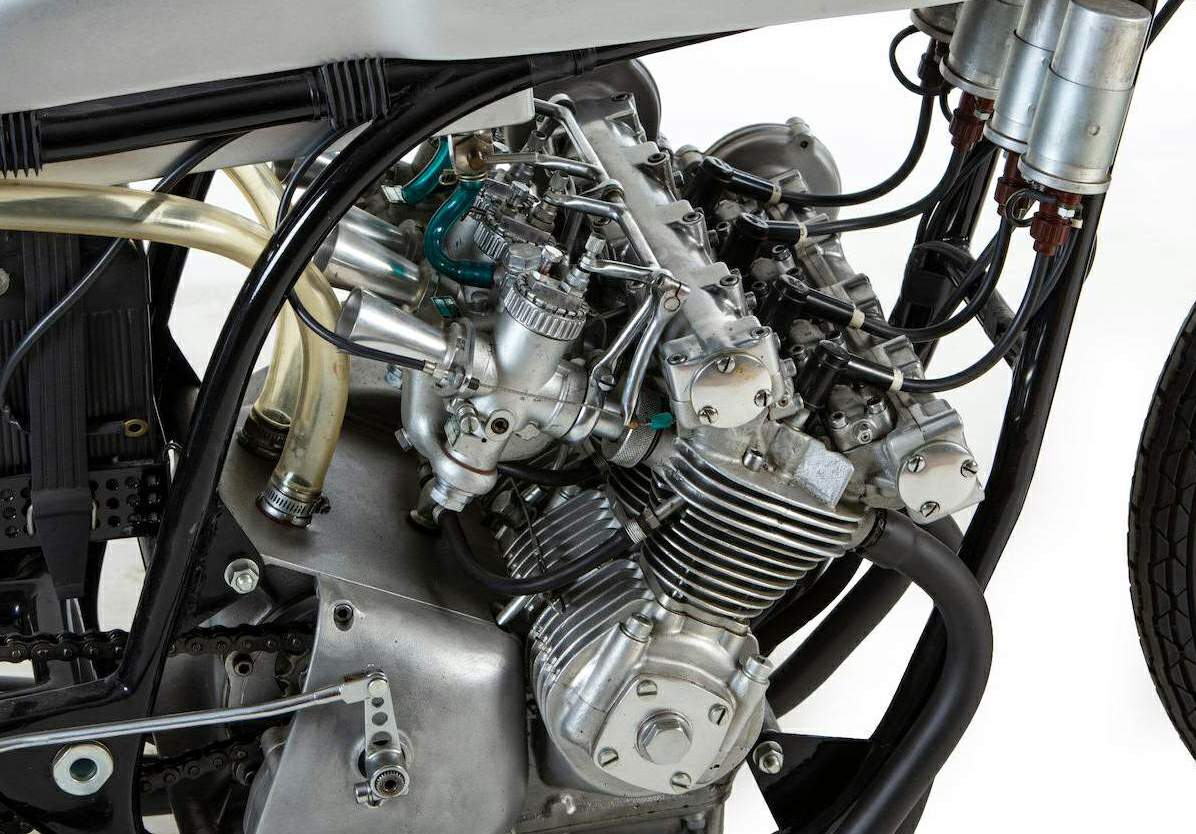
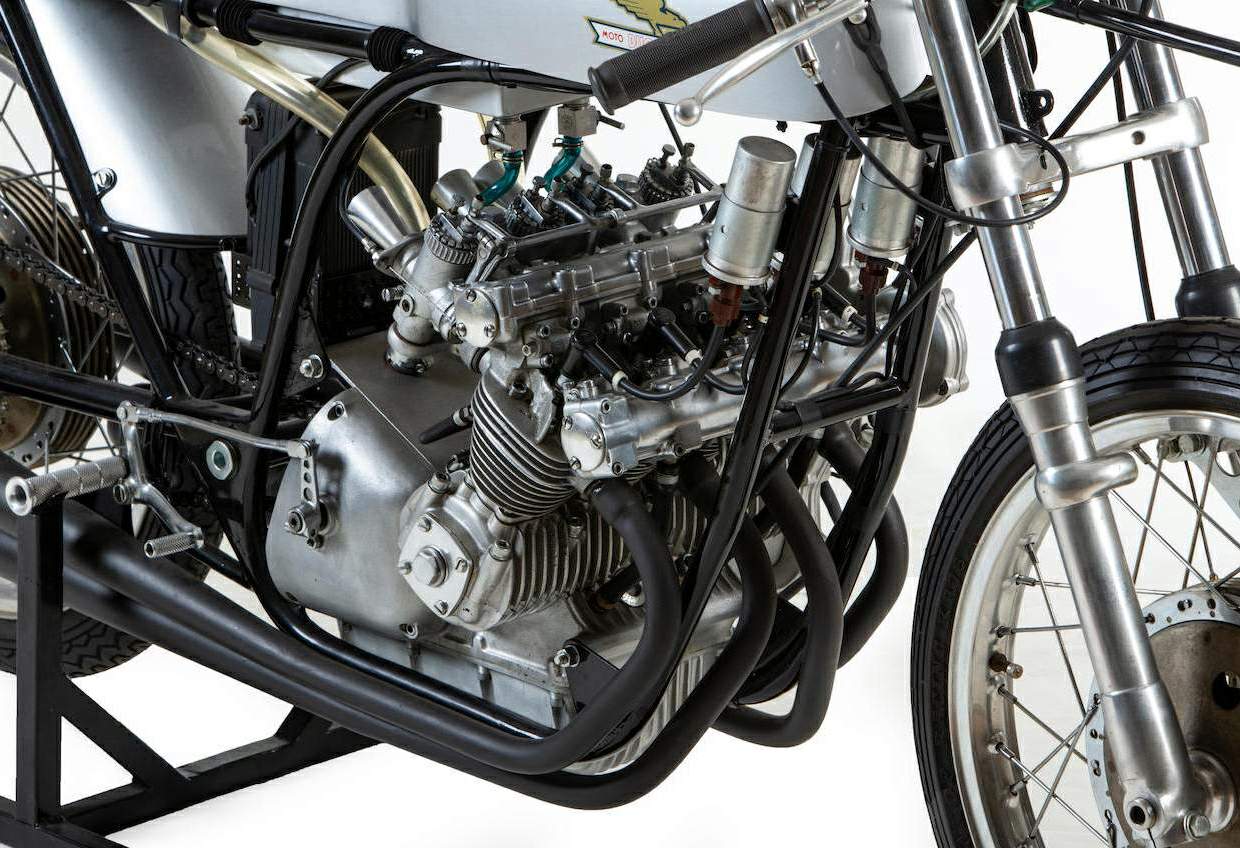
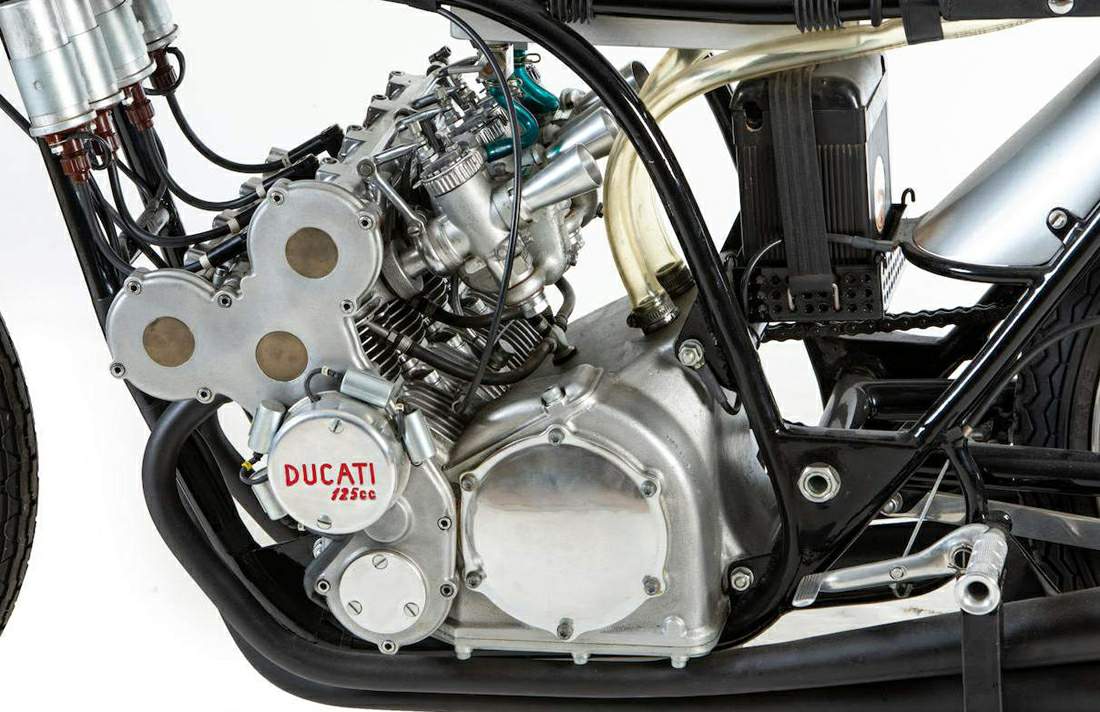
|
Any corrections or more information on these motorcycles will be kindly appreciated. |